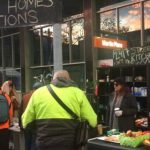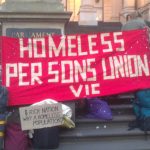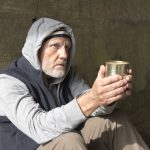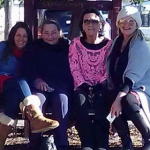Skewed Priorities: Two Vacant Properties for Every Homeless Person in NSW
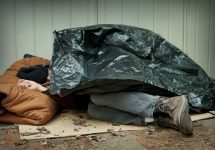
On October 18, Australian Greens Senator Lee Rhiannon posted the following statement on her Facebook feed: In NSW, 28,190 people are homeless, while 68,000 properties sit vacant. The senator then posed the question, “Is this fair?”
Of course, the overwhelming response from those in the community aware of the increasing numbers of rough sleepers would be that this situation is far from fair. The last City of Sydney street count found 386 people were sleeping on the city streets on an August night this year.
The figures in the Facebook post indicate that there are 2.4 empty properties for every person experiencing homelessness in this state. Indeed, many would say that it’s unjustifiable for a society to allow some of its members to go without shelter, while others own vacant dwellings.
The estimated number of vacant properties in NSW was calculated by taking the overall amount that were indicated as empty in last year’s Census and converting that number with an analysis of water usage data by Prosper Australia, which removes temporarily vacant properties from the equation.
Wealth accumulation driving homelessness
As Senator Rhiannon points out, the number that is left is an estimate of long-term speculative vacancies. “These aren’t properties in between buyers,” she told Sydney Criminal Lawyers®. “They’re being deliberately left vacant to speculate on rising prices.”
While there’s a gaping lack of affordable housing in Australia, along with talk of a housing shortage, there’s plenty of property speculation going on. Prosper Australia findings indicate that nationwide there are about 300,000 speculative vacancies, which accounts for 3 percent of all housing.
According to Ms Rhiannon, it comes down to “a relatively small number of people with huge wealth,” who “need a place to park it.” She questioned why someone would “bother with tenants and real estate agents” when they can simply make money by letting their property “sit there.”
The Greens spokesperson on housing pointed to policies that favour wealth accumulation as a major problem. “The capital gains tax discount of 50 percent makes it very attractive for high-income people to plough their money into property and take advantage” it, Ms Rhiannon continued.
Short-term rentals take their toll
Homelessness Australia has been conducting its own research into water usage data in some of the state’s postcodes. Anecdotal evidence suggests some properties are being reserved simply for short-term renting, such as Airbnb.
“If this is the case and properties are being purchased purely for short-term letting, rather than the general letting pool, then tax policy could be amended to address this,” said Digby Hughes, senior policy and research officer at Homelessness NSW.
The peak homelessness organisation has seen research indicating that short-term leasing properties are resulting in the removal of 1 to 2 percent of the rental market. “Homelessness NSW supports changes to negative gearing and capital gains tax to assist first home buyers,” Hughes added.
An affordable housing crisis
And while countless properties lie vacant, it’s a shortage of affordable and social housing that’s driving the ever-increasing numbers of Australians experiencing homelessness.
The 2017 Report on Government Services indicates that since 2009 the number of public housing homes has actually dropped by 16,000 dwellings.
The Turnbull government introduced its National Housing and Homelessness Bill into parliament on October 25. Those in the sector have criticised the government’s new approach to housing as it provides no additional measures to address the rising need for affordable housing.
In NSW, “there are approximately 60,000 people on the public housing waiting list,” Hughes explained. “This is unchanging and without a major increase in new public housing stock it is unlikely to decrease.”
The homelessness advocate outlined that the waiting list for most public housing properties is 10 years, while in some areas of metropolitan Sydney the minimum wait is 5.
“Programs such as the Social and Affordable Housing Fund, while welcome, come nowhere close to addressing the level of demand,” Hughes added.
The NSW government announced in September it would tender for 1200 new social and affordable houses as part of the fund, which was launched last year.
Criminalising those in need
“We need a cultural shift. Housing is a human right, yet it’s broadly accepted that housing as a source of wealth can trump housing as a source of shelter,” Ms Rhiannon declared. “That should be seen as unethical.”
The senator pointed out that in Australia social housing only accounts for 4 percent of the overall housing stock, whereas in a nation like the Netherlands it makes up around 20 to 30 percent.
And while those sleeping rough on the street only account for around 7 percent of the total number of people with no fixed address in this state, it’s these most vulnerable citizens who are bearing the brunt of government policies that are increasingly criminalising them for their plight.
In August, the Berejiklian government rushed through a piece of legislation which broadened police powers to remove people and their property from crown land within the City of Sydney local area. The bill specifically targeted a camp of rough sleepers in Martin Place.
The move did nothing to allocate these people with the permanent housing they need. Many of them simply moved on to Glebe’s Wentworth Park, where they were similarly evicted in mid-October.
A long-term permanent solution
“The most obvious and easy thing to do would be simply to give people that are homeless a home,” Ms Rhiannon continued. “That’s what they do in Finland. It’s called housing first and the program is unconditional.”
Housing first is an approach to homelessness that initially provides homeless people with a permanent place to live, accompanied with needs-based support services, rather than placing them in temporary or crisis accommodation to begin with.
Finland adopted the housing first approach in 2008. By 2014, the number of individuals suffering long-term homelessness had decreased by about 1,200 people. And rough sleeping had virtually been eradicated, along with the need for crisis accommodation.
“Our access to the public school and health system is unconditional and universal,” Senator Rhiannon concluded, “that’s what we need for housing.”



